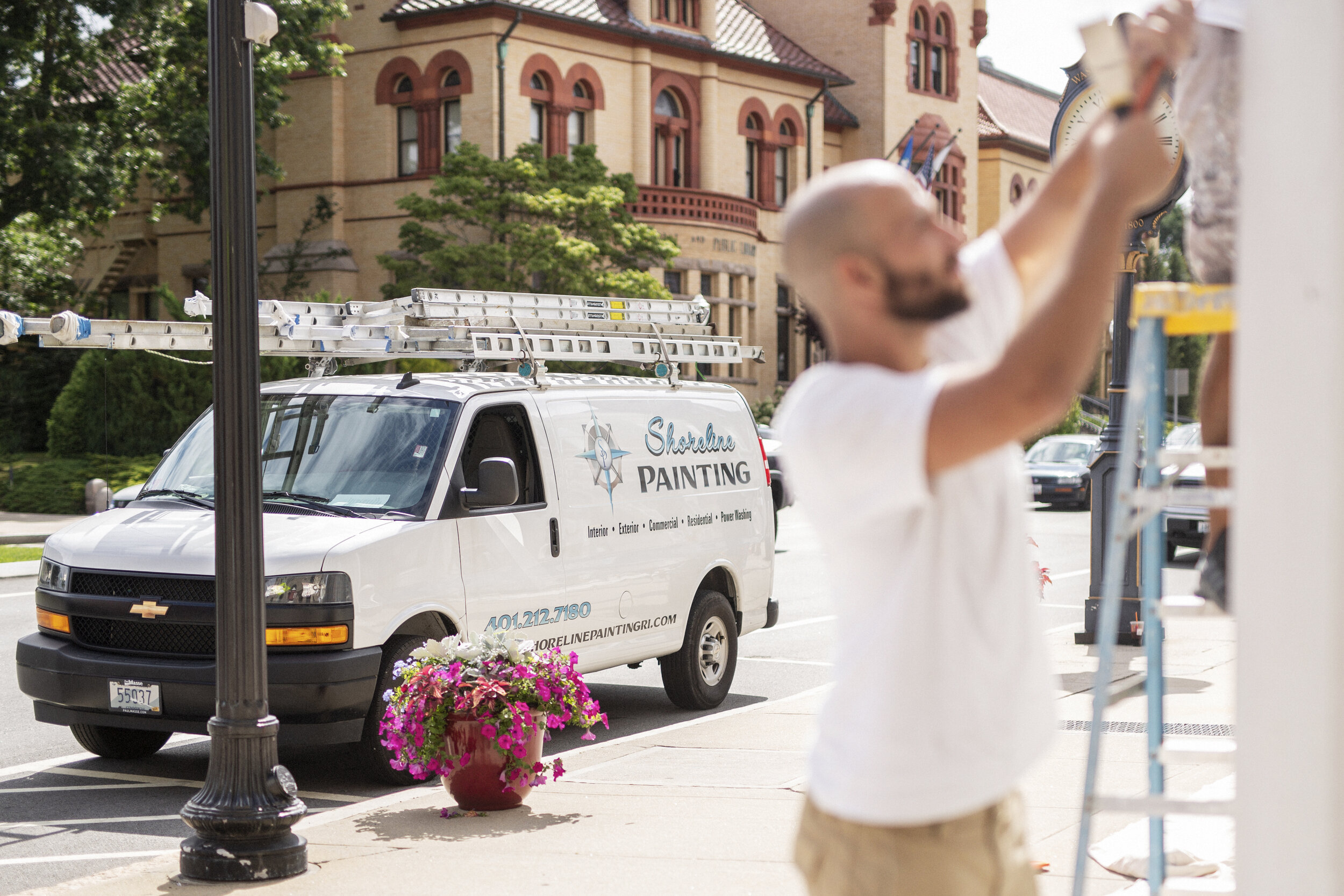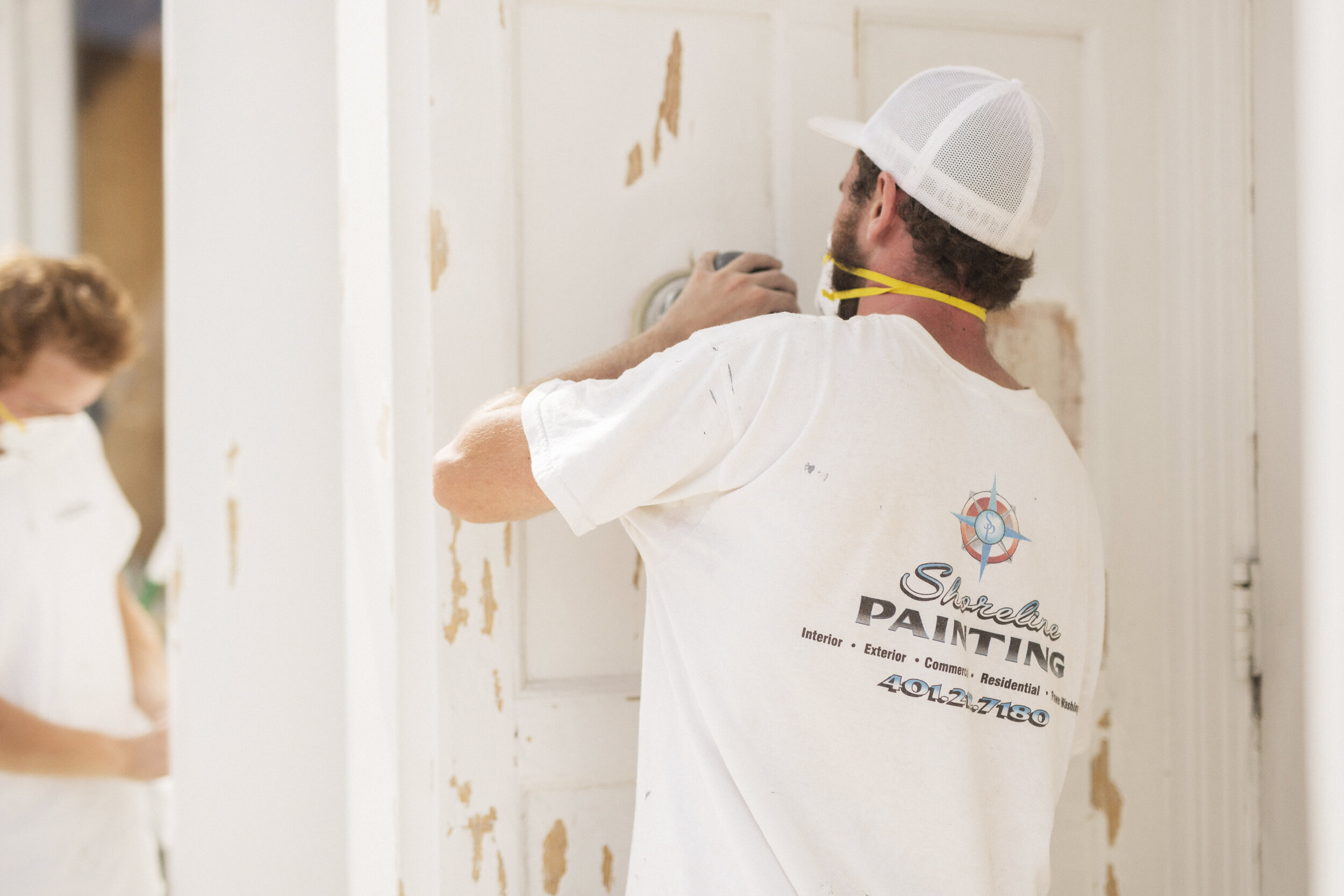FAQ 1
What things should be sought after or avoided when hiring a paint contractor?
Be sure to look for: highly-rated reviews or references, painters that are local, timely responses, direct and transparent communication, and proper licenses and insurances.
Do your best to avoid: bad word of mouth, painters with a lack of reviews, franchises without community ties, unresponsive communication, and a lack of proof of licenses.
FAQ 2
Is it important for a painter to be licensed and insured? How do I know if my painter carries either?
Yes, it is very important. All you have to do is ask! Painters who hold valid licensing and insurance should be able to show proof of documentation easily upon request. Our paperwork is provided electronically with every proposal we send via email.
FAQ 3
Do I need to be present or absent throughout the work order?
Whatever makes you most comfortable! All of our painters are personable and trustworthy, so they can operate just as effectively with the customer present as they can when the customer is away.
FAQ 4
What kind of paint do you use? What is the quality? Oil or latex?
We actually use a wide variety of industry standard materials from various vendors. Our painters are experienced with a multitude of materials and have a strong understanding of their purposes and processes.
FAQ 5
Do you offer any type of guarantee or warranty?
Though we don’t offer a traditional extended warranty, due to the number of external variables and environmental factors that can contribute to an expedited product degradation, particularly on exterior repaints, we do guarantee customer satisfaction. Our painters lean on our long track record of success and positive customer experiences as a testament to our dedication to standing by our work!
FAQ 6
What do you do if you find extensive damage or rot?
Often times it can be hard to identify failure or rot in the substrates underneath an existing paint job. The procedures our painters follow include identifying problem areas early on in the process of restoring and repainting and taking the proper steps to ensure the failure does not continue to degrade the integrity of the surrounding material before the repair.
In the event that rot has compromised the integrity of the substrate beyond our scope of practice in terms of repair, we recommend calling in a woodworker to replace the problem areas, and can often provide a reference to those customers who require one.
FAQ 7
Who will be my point of contact for any questions, concerns, or changes I want to make throughout the work order?
Communication is key! All of our painters are personable and informed, but the customer can expect to be familiarized with the project manager, foreman, and/or crew lead (dependent on project size) in the infancy of their project. This is to ensure direct and consistent communication while the work order is being completed.
It is also very important to us that our customers know the owner and CEO is always available and approachable throughout the entirety of a project.
FAQ 8
What hours does your crew work once the job is started?
A typical workday for our painters begins at 7:00 AM and ends around 3:30 PM. The customer can expect our paint professionals to arrive on site between 7:15 AM and 7:45 AM (travel dependent) and leave the site between 3:00 PM and 3:30 PM. These times are a bit flexible depending on the location of the job site and the nature of the project itself.
FAQ 9
What steps are taken to protect my floors, furniture, and belongings throughout the painting process?
Part of providing a quality finish is protecting and preserving the property we are working around. Our painters take every practical precaution possible to safeguard their surroundings throughout the duration of a project. After removing wall hangings where necessary, drop cloths, painter’s tape, masking paper, sheet plastic, tarps, tie-offs, and paddings are all deployed as needed to ensure the customer's property is properly protected as the work order is completed. In addition, job sites are maintained daily as to not allow the crew to fall behind on expected clean up.
FAQ 10
How long will my project take to complete?
Project duration can vary depending on the size and intricacies of the work order, that being said, we have a sizeable workforce of individuals who are quite talented in their respective field which allows us the capability to allocate manpower where needed to achieve deadlines many smaller companies may not be able to accommodate.
FAQ 11
Do I need to move furniture or belongings before the job starts?
Although it is always helpful when the customer contributes to getting the project areas ready for the work order to be started, our crew members are more than capable of handling furniture and belongings when necessary. Moving furniture and small belongings is expected to some degree when starting most jobs. The estimator assigned will always address this topic with the customer during the initial take-off and help formulate a plan that works for both parties.
FAQ 12
What are the advantages/disadvantages of the different paint sheens?
Different sheens offer different functions; dependent on circumstances. Although the main operation of a paint sheen is to contribute to the aesthetic value of the substrate that the paint is being applied to, there are a few things to consider when selecting a sheen. A general rule of thumb is that the lower the sheen, the more a paint will help hide imperfections. Flat or matte sheens are ideal choices for repainting ceilings and walls, as they help to hide existing blemishes. In contrast, higher sheens, such as satin, or semi-gloss, have a higher resistance to moisture and are a bit easier to clean. Making them excellent choices in high moisture, low air flow areas, where mildew build-up may be a concern. This, again, is a subject that the estimator assigned can lend more insight once onsite for the initial take-off.
FAQ 13
How do I know if I have lead based paint? What are my options to restore or repaint over the lead?
Lead based paints are typically able to be identified by a very specific failure pattern known as ‘alligatoring.’ If lead is identified there are a few ways to approach a repaint, circumstances depending, abatement is not always necessary, encapsulation may be a possibility. The estimator assigned can help assess what avenues to achieve your vision may be possible.
FAQ 14
What is the process if I want to add work or change the scope of the project once the project has already been started?
This is a very common occurrence. Oftentimes, as jobs progress and our painters begin their work, non-targeted areas in the repaint become a sore thumb and are requested to be added into the scope of work by the customer. These items are referred to as change orders and are simple to accommodate while we are on site. By bringing it to the attention of either the field leadership, project manager, or owner, an estimator can be on-site as soon as possible to write a work order adjustment, which can then be electronically signed by the customer and added to the scope of work, a very streamlined and pain-free process.


